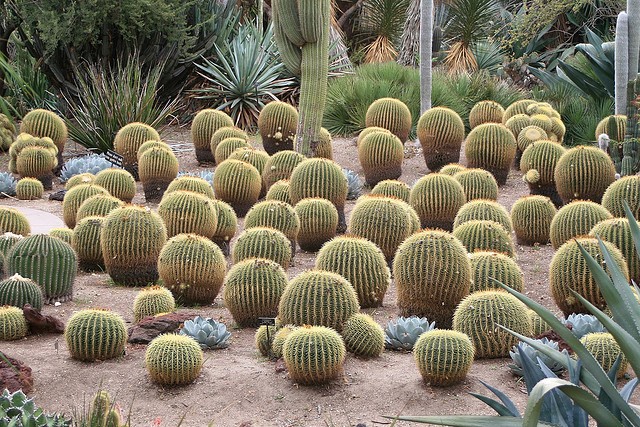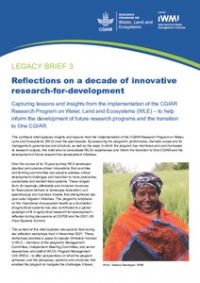Cacti could be the new jatropha. There is a buzz in some biofuel circles that these desert succulents are set to become the next wonder energy crop -- yielding prodigious quantities of biomass for biogas fermentation to generate electricity in the semi-arid lands of Africa and elsewhere.
Depending on your view, giant cactus farms spread across poor and famine-prone regions such as the Sahel, could transform low-carbon energy markets, reduce desertification and generate much-needed income. Or they could pose a dramatic new threat to livelihoods and landscapes.
Promoters of cactus power, such as the British eco-entrepreneur Mike Mason, accept that energy crops have a bad reputation for taking land that could be growing food. They argue that the trick is to find crops that will grow on land that is too arid to grow food without expensive irrigation. So they are targeting desert plants like cacti which need little water.

An Energy Powerhouse
While most plants open their leaf stomata during the day to absorb carbon dioxide and convert it using sunlight and water, cacti and other plants with a crussulacean acid metabolism (CAM) have evolved to be hyper-efficient by only opening their stomata at night. Since a daytime opening of stomata typically results in massive water loss through evaporation, cacti and other CAM plants can reduce their water loss by as much as 90 per cent. They then store the CO2 in the form of malate overnight, an organic compound, before restarting the photosynthesis process when the sun comes up.
Result: lots of biomass for relatively little consumption of water – in places where not many other cultivated plants will grow. It sounds like a win-win.
CAM plants include the prickly pear (Opuntia ficus indica), a South American cactus widely grown for cattle fodder in Brazil, but regarded as invasive in many parts of the world; and an African native shrub called Euphorbia tirucalli, also known as the pencil cactus or firestick plant. Others among the up to 16,000 species of CAM plants include pineapples, agave and many forms of cacti. They all have a method of carrying out photosynthesis that saves water while producing plant biomass.
It’s no wonder that companies are looking into CAM plants as a biofuel. For little water, and otherwise non-arable land, they can produce lots of biomass to convert into biofuel.
CAM ventures
Live Energies, a German company that also helped develop jatropha, has begun trials intensively cultivating two CAM varieties - Opuntia and Euphrobia in Kenya. They are reportedly delivering high yields.
Mason --whose previous business activities include setting up ClimateCare, which has become one of the world’s largest carbon offsetting companies– thinks he is onto another winner. He is chairman of a UK company called Tropical Power, whose subsidiaries in Kenya and Ghana are already generating biogas with farm waste. But he says switching feedstock to CAM species could dramatically lower fermenting costs. This is because, beside their other virtues, CAM species also have an unusually low content of lignin. Less lignin speeds along the feedstock fermentation process.
In a research paper published earlier this year by the Royal Society of Chemistry, Mason and co-authors from Imperial College London and Kew Botanic Gardens claimed that CAM crops could become a “globally significant bioenergy resource.” They argued that 250 million hectares of land, or a tenth of the semi-arid land in the world, could be cultivated to produce enough fuel to generate as much electricity as currently comes from burning natural gas globally. And if the crops are constantly regrown, then the net carbon emissions are close to zero.
The paper also argued that biogas plants would deliver steady supplies of wastewater containing nutrients that could be used to irrigate and fertilize food crops close by. So, the authors argue, you end up with energy crops AND more food.
Read the Royal Society of Chemistry research paper on "the potential of CAM crops as a globally significant bioenergy resource: moving from ‘fuel or food’ to ‘fuel and more food’"
The downsides
There are plenty of downsides. Mason admits that plant breeders have rarely taken much notice of CAM plants, so they are still at an early stage of development – equivalent to “where grain crops were 8000 years ago.” That makes them sound disturbingly like jatropha, which was just another under-researched African weed until it was identified by Goldman Sachs back in 2007 as a potentially massive source of biodiesel. But Mason says the lack of research into CAM plants also means there is great potential to improve yields.
Mason’s company, Tropical Power, says CAM plants should grow well in semi-arid land with annual rains of 25-50 centimetres, where “previously, land use has been minimal.” This, it says, “can open up a huge opportunity for grid-friendly electricity, create jobs in rural areas and improve land use and fertility.”
However, for anyone concerned about landscapes, livelihoods and water use in semi-arid environments, all this should set alarm bells ringing. Just because land may not be growing food crops does not mean that it is empty or unused by humans. Nor does it mean it has no other functions ecologically or in the provision of wider “ecosystem services,” such as hydrological management. Disrupting ecosystems on such a large scale could have unforeseen environmental repercussions.
This paper briefly mentions that “much of [the land earmarked for CAM crops] may also have competitive use as pasture, albeit possibly of low productivity.” But the issue isn't pursued. Nor is the question of who owns the land and what those owners might think. Land grabs surely loom.
Some will say that a high-volume energy crop has the potential to provide economic and employment alternatives to grazing systems that have resulted in land degradation across semi-arid lands. But the theories of “over-grazing” are contested. And in any case, there is a serious risk that the opposite will happen. That, far from alleviating desertification, biomass cultivation will – like past grabs for sugar, cotton and other irrigated crops – simply corral grazing herds into ever smaller areas, thus increasing the risk of land degradation.
The paper also does not address water use at a landscape level. However water-efficient they may be as individual plants, massive industrial plantations of cacti could have serious hydrological repercussions. These plantations could potentially depress water tables, dry out wells and staunch seasonal rivers, especially during the famine-inducing droughts for which semi-arid lands are notorious.
Even in the desert, eco-entrepreneurs should tread carefully.



/index.jpg?itok=EzuBHOXY&c=feafd7f5ab7d60c363652d23929d0aee)
















Comments
Nice article Fred,
I'm native of where Cactaceae are native, great family of plants. I'm highly dubious about the high yields and growth rates however. The nature of CAM is that the amount of photosynthesis that the plant can produce depends on the amount of malate stored as you indicate. Typically the story is very low water usage, but also relatively low productivity as most desert landscapes, even the opuntia dominated ones, will attest.
Fabrice
nopal is an alternative excelene for energy production, food and recovery of arid areas.
We are already working in South Africa with nopal for energy
You can get information on www.elquiglobalenergy.com